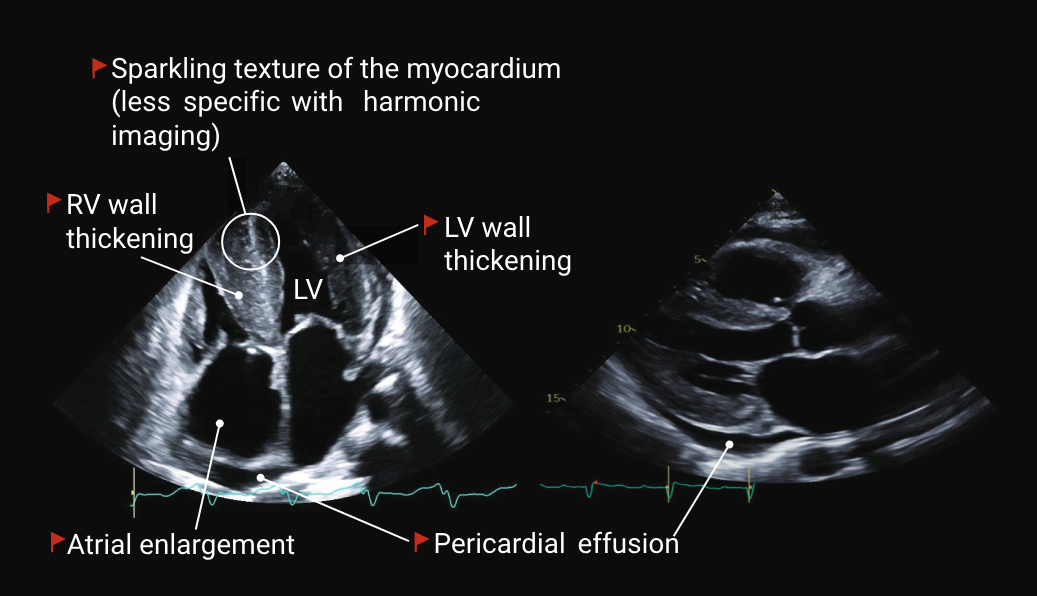AI Detection of Cardiac Amyloidosis: A Breakthrough in Heart Disease Diagnosis
How AI is Transforming Cardiac Amyloidosis Diagnosis
The advancement of AI detection of cardiac amyloidosis is reshaping the way we approach one of the most underdiagnosed heart conditions. A recent study in the European Heart Journal revealed that artificial intelligence can identify cardiac amyloidosis from a single echocardiographic video clip with striking accuracy.
Traditionally, patients have endured invasive testing, delayed recognition, and frequent misdiagnosis. With AI-powered tools, however, early recognition is becoming quicker, more accurate, and more accessible.
Understanding Cardiac Amyloidosis
Cardiac amyloidosis happens when abnormal amyloid proteins accumulate in the heart, leading to stiffness, poor pumping function, and eventually heart failure. The two most common types are:
ATTR (transthyretin) amyloidosis – including the hereditary V122I mutation, especially common in African populations.
AL (light-chain) amyloidosis – related to plasma cell disorders.
Because symptoms mimic common conditions like hypertension or hypertrophic cardiomyopathy, patients are often diagnosed late. Early detection is crucial, as treatments such as tafamidis work best in the early stages.
AI-Based Screening: Key Findings from the Study
The research team trained an AI model on more than 2,600 patient cases and validated it in 18 international centers.
Highlights include:
Accuracy: AUROC 0.93
Sensitivity: 85%
Specificity: 93%
Consistent performance across ethnic groups, including African and Afro-Caribbean patients
Outperformed existing clinical scores
As a result, this AI system could reduce the need for invasive biopsies, cut down on misdiagnoses, and speed up treatment decisions.
Why This Matters for African Communities
In Africa, particularly West Africa, up to 1 in 25 individuals may carry the V122I mutation linked to ATTR amyloidosis. Unfortunately, limited diagnostic tools mean many patients go undiagnosed until advanced disease stages.
By integrating AI into standard echocardiography, healthcare systems could:
Detect disease earlier
Improve equity in diagnosis
Offer timely treatment options to high-risk groups
Consequently, this could significantly reduce the burden of undiagnosed heart failure in African populations.
How the AI Model Works
Unlike nuclear imaging or biopsy, this tool only requires a routine echocardiogram clip. The algorithm identifies subtle patterns invisible to the human eye and flags patients who may need further evaluation.
Importantly, this means hospitals and clinics already using echocardiography could adopt AI-based screening without requiring expensive infrastructure.
Practical Benefits for Patients and Clinicians
Non-invasive: No biopsy required
Accessible: Works on standard echocardiograms
Equitable: Performs consistently across diverse populations
Time-saving: Reduces diagnostic delays
Scalable: Can be implemented globally
Challenges Ahead
Although promising, challenges remain:
Regulatory approvals are still needed
Training clinicians to work with AI outputs is essential
Affordability and access in low-resource settings must be ensured
Ethical considerations must guide implementation
Even so, the potential to transform patient care is undeniable.
FAQs on AI and Cardiac Amyloidosis
What is AI detection of cardiac amyloidosis?
It refers to using artificial intelligence algorithms to identify the disease from echocardiography videos.
How accurate is it?
The latest study showed 85% sensitivity and 93% specificity, making it more accurate than current screening scores.
Why is this important in Africa?
The hereditary V122I mutation is more common in African populations. AI can help reduce misdiagnosis and improve early treatment access.
Will AI replace traditional testing?
Not yet. It works as a screening tool to identify at-risk patients, who still need confirmatory tests.
What treatments are available once diagnosed?
For ATTR amyloidosis, therapies like tafamidis and gene-silencing approaches can improve outcomes if started early.
Conclusion: The Future of AI in Cardiac Amyloidosis Care
The success of AI detection of cardiac amyloidosis marks a new frontier in cardiovascular medicine. By combining routine echocardiography with advanced algorithms, healthcare providers can detect disease earlier, improve survival, and reduce inequities in care.
At CRK Clinical Research Key NGO, we believe that innovations like this must reach underserved populations. Through research, awareness, and advocacy, we aim to ensure that no patient is left behind in the fight against amyloidosis.
🔍 Read the full study here: Slivnick JA, et al. Cardiac amyloidosis detection from a single echocardiographic video clip: A novel artificial intelligence-based screening tool. European Heart Journal. In press.

